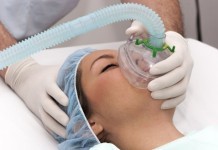OMAHA, NE – Orthopedic surgeons of the University of Nebraska, Medical Center (UNMC) have found a new auscultation point that combines all cardiac, respiratory, and abdominal listening points into one. Their findings have been supported by the American College of Orthopedic Surgeons.


The region mentioned in the radical new clinical exam proposed by UNMC orthopedic surgeons is located approximately 1 mm inferior to the xiphoid process with the stethoscope diaphragm facing in an upward 30 degree angle. The recommendations for this exam are to place the stethoscope in said region and listen until a time-appropriate nod can be given to the patient and other subsequent medical teams. The radical new auscultation point reports detection of up to 25% of cardiac murmurs, 15% of small bowel obstructions, and 20% of any respiratory pathological sounds. The new exam, however, does not mention the etiologies of these sounds.
When we reached out to a representative for the clinical application of this exam finding, we found that most orthopedic surgeons had been implementing this listening point in their practice long before ever supported by the American College of Orthopedic Surgeons. When asked about their low sensitivity, their response retorted that their job was just for orthopedic issues, so anything additional was considered “icing on the cake.”
We are having conflicted reports regarding the accuracy of this clinical exam and its practice in other specialities. Whether this lack of precision could be related to the dust having accumulated within the diaphragms of Orthopedic Surgeons’ stethoscopes, this radical exam and its sensitivity has yet to be explored in terms of instrument or user-related etiology.
- 1.3KShares








